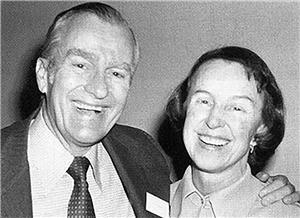On July 28, 1952, members of the Freeholders Charter Commission elected in November 1950 to prepare a new Home Rule Charter for King County approve the final draft of the proposed charter. The new charter would replace the three-member Board of County Commissioners that ruled King County since it was created in 1852 with a new seven-member County Council and an appointed County Administrator. Many elected county offices would become appointed positions. However, the 1952 charter proposal is soundly defeated in that November's election. A new set of freeholders will be elected 15 years later and county voters will adopt the somewhat different charter they propose in 1968.
Time for a Change?
Since its creation in 1852, King County, like most Washington counties, was governed by three County Commissioners. (The original commissioners first met in 1853.) The Commissioners exercised both legislative and executive power, passing laws and administering county departments. In addition, the County had many other elected officials, including the assessor, auditor, clerk, coroner, prosecuting attorney, sheriff, and treasurer, who exercised power over their departments more or less independently of the commissioners. The plethora of positions dispensing county jobs and funds permitted the growth of a patronage system that both political parties fought to control.
As the County neared its centennial, good government reformers led by the Municipal League of Seattle and King County -- which had won passage of a new Seattle City Charter in 1946 -- sought to revise the County's Territorial-era government to bring it more in line with the needs of a modern urban county. In 1948, the League won passage of a state constitutional amendment that authorized counties to adopt home rule charters -- essentially county constitutions that define and organize county governmental structure. Under the amendment, elected "freeholders" would draft a Home Rule Charter to be submitted to the voters for approval.
Fifteen freeholders were chosen at the November 1950 election to prepare the new King County charter. Most of the winning candidates were members of a slate endorsed by the Muni League. At the urging of League President Ben Ehrlichman (1895-1971), the freeholders selected James R. Ellis (b. 1921) as their counsel, giving the young attorney a leading role in drafting the proposed charter. Ellis was nominally supervised by Charles O. Carroll, the powerful prosecuting attorney. Like many in the existing power structure, Carroll did not support major change, and Ellis recalled "serious differences" (Crowley, 36) between the two. Ellis faced other obstacles, including a lawsuit to block payment of his salary -- he and his wife subsisted largely on fish caught at their riverside cabin in Issaquah until the suit was resolved.
The Proposed New Government
Despite the resistance, the Freeholders Charter Commission spent nearly two years writing a new "constitution" for King County. Under the proposed charter, a seven-member Board of County Commissioners would exercise legislative power. Three commissioners would be elected from Seattle, three by county voters outside the city, and one from the County at large (giving Seattle an effective majority on the proposed board, in keeping with its population advantage at the time of approximately 468,000 residents to 265,000 outside the city). Commissioner elections would become non-partisan. The seven commissioners would receive annual salaries of $3,600 each, as opposed to the $6,100 each that the three existing commissioners earned, largely because the new commissioners would not have administrative duties.
Executive power would be exercised by a County Administrator, appointed by the commissioners, who would oversee a centralized county administration. The commissioners or administrator would also appoint the previously elected assessor, auditor, clerk, coroner, sheriff, and treasurer. Only the prosecutor (along with the commissioners and judges) would be elected.
The proposed charter was approved unanimously by the 10 freeholders present at the July 28, 1952, meeting. Three other freeholders also indicated their support for the draft, although as the freeholder committee chairman, State Senator Victor A. Zednick, noted, "No one freeholder is for every specific detail of the charter, but we are for it as a whole" ("Freeholders Approve ..."). Only one specific objection was noted at the July 28 meeting: Freeholder David J. Williams argued that the new charter's seven county commissioners should serve without pay, as school board members then did.
Voters Say No
The Home Rule Charter triggered far more opposition than support. The Democratic and Republican parties united to oppose a document they saw as excluding them from county government. Organized labor also opposed the charter, as did many county employees. Opposition ranged across the political spectrum. Progressives felt the unelected Administrator position wielded too much power, and others denounced the plan as communistic, a powerful charge when McCarthyism was at its height. When the votes cast on November 4, 1952, were counted, the Home Rule Charter was defeated by nearly a two-to-one margin.
After the defeat, Ellis and other reform advocates focused on design of a regional utility, Metro, governed by a federated council of local officials and responsible for comprehensive planning, transit, parks, and water quality. Their first plan was narrowly rejected on March 11, 1958. A second proposal limiting Metro to waste treatment passed on September 9 of the same year.
A new Home Rule Charter effort was initiated in the 1960s. A freeholders committee was elected in 1967 and the charter it wrote was adopted on November 5, 1968. County government under the 1968 charter, with a partisan nine-member County Council and an elected County Executive, differed significantly from the structure proposed in 1952.

